That Awkward Little Entryway? Here’s How to Make It Feel Huge
I’ve walked into more homes than I can count, from brand-new builds to charming old city apartments. And you know the most common puzzle I see? The small entryway. It’s that little slice of space that often gets ignored—treated like a hallway we just need to rush through. But honestly, that small area has a massive job. It’s the very first handshake your home gives a guest and the last pat on the back you get before heading out into the world.
In this article
Making it feel open and functional isn’t about some kind of design magic. It’s about a solid understanding of how we see things—light, scale, and what our brains actually pay attention to. So, let’s skip the quick-fix lists you see everywhere and talk about the proven methods the pros use to turn a cramped corridor into a bright, welcoming introduction to a home.
First, Why Does a Space Feel Small Anyway?
Before you even think about picking up a paintbrush, it’s super helpful to understand why a small space feels so, well, small. The feeling of being cramped is part physical reality and part psychological trick. As designers, we play with both.
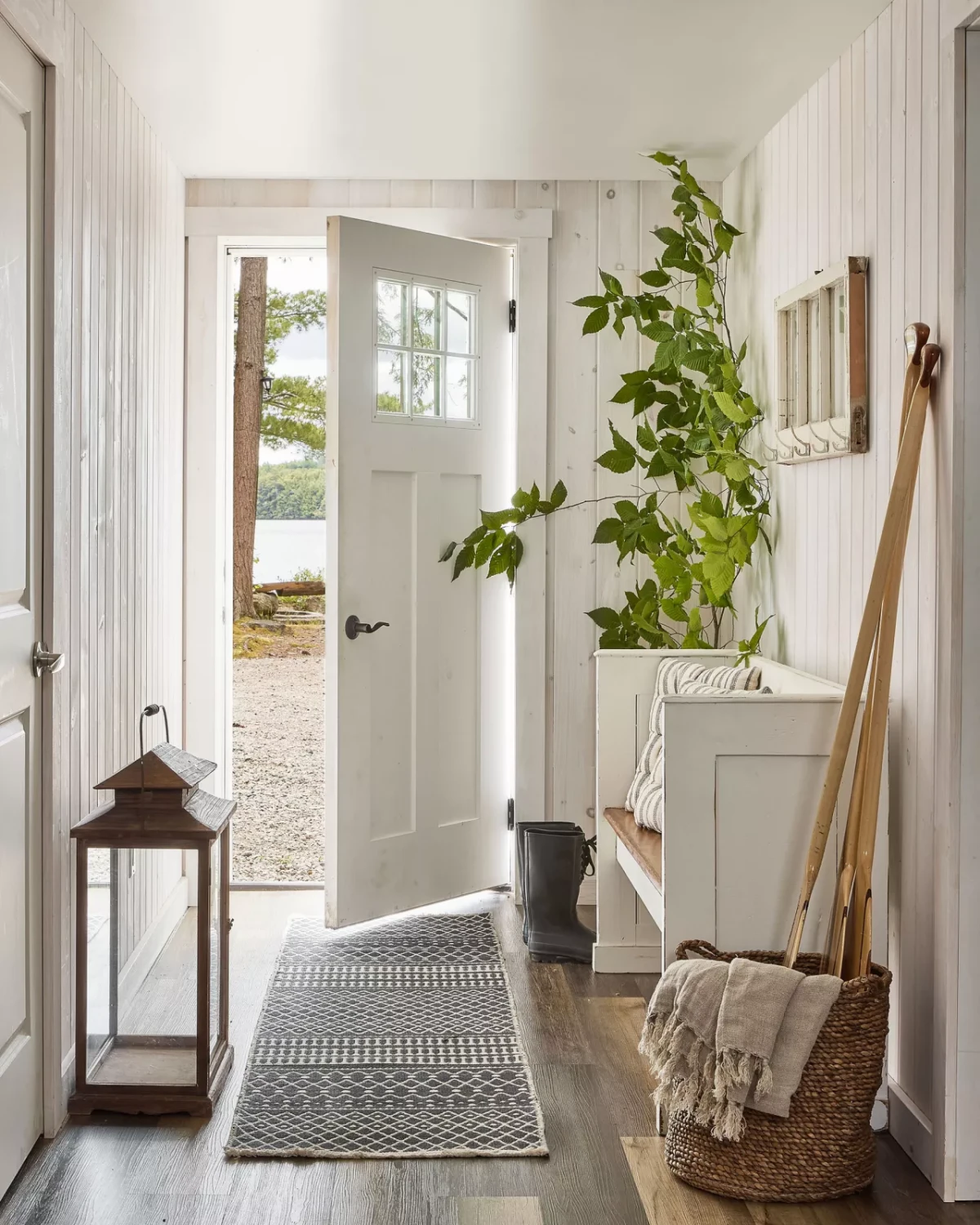
It really boils down to three things: light, color, and what I call “visual noise.”
Light is everything. A dim space with warm, low-wattage light might feel cozy in a den, but it just feels confining in an entryway. Our brains are hardwired to associate bright, clear light with openness. It’s also about the quality of the light. There’s a thing called the Color Rendering Index (CRI) that measures how accurately a light source shows true colors. A bulb with a low CRI can make even the most beautiful paint look drab and muddy. Not what we’re going for.
Then there’s color, which has a superpower called Light Reflectance Value, or LRV. It’s a simple scale from 0 (jet black) to 100 (pure white) that tells you how much light a color bounces back. A paint with an LRV of 75 reflects 75% of the light that hits it, making the room feel brighter and bigger. A color with a low LRV, say around 15, just soaks up all that light. This is the real science behind the old advice to just “paint it white.”
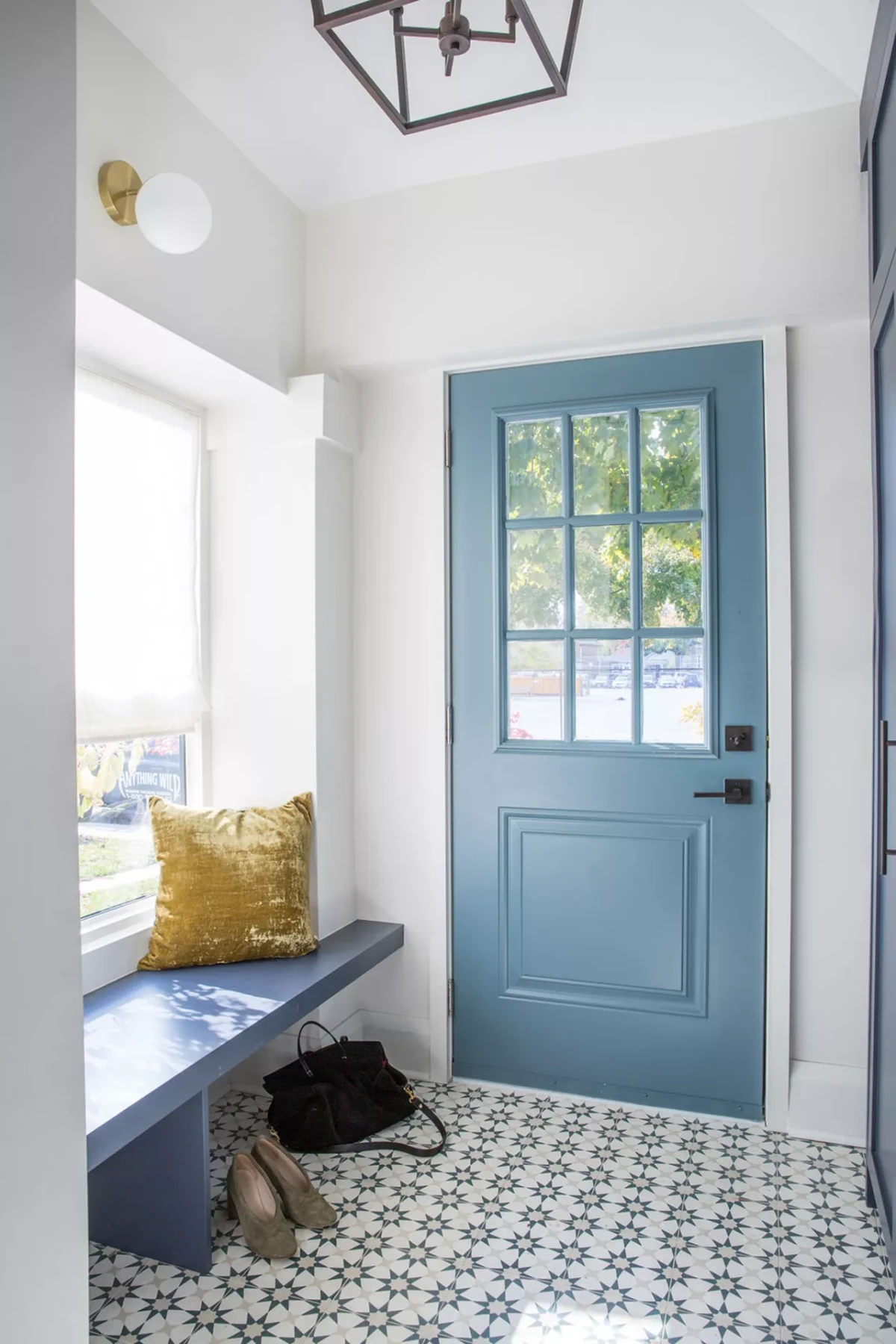
Finally, there’s visual noise—or clutter. A disorganized space forces your brain to work overtime to process everything it sees. Each stray shoe, every pile of mail… they’re all tiny problems for your brain to solve, creating a subtle feeling of stress. An organized entryway calms that mental effort, which we perceive as spaciousness.
The Foundation: Picking Paint Like a Pro
Choosing a paint color is easily the most impactful and budget-friendly change you can make. You’re looking at an investment of around $100 for a massive transformation. Plan on spending between $50 and $80 for a gallon of high-quality paint, plus another $30 to $50 for good supplies like a quality primer, rollers, brushes, and tape. Trust me, don’t cheap out on the roller—it makes a huge difference.
Choosing the Right Sheen is Half the Battle
The finish of your paint is just as crucial as the color, especially in a high-traffic zone like an entryway. Here’s how I break it down:
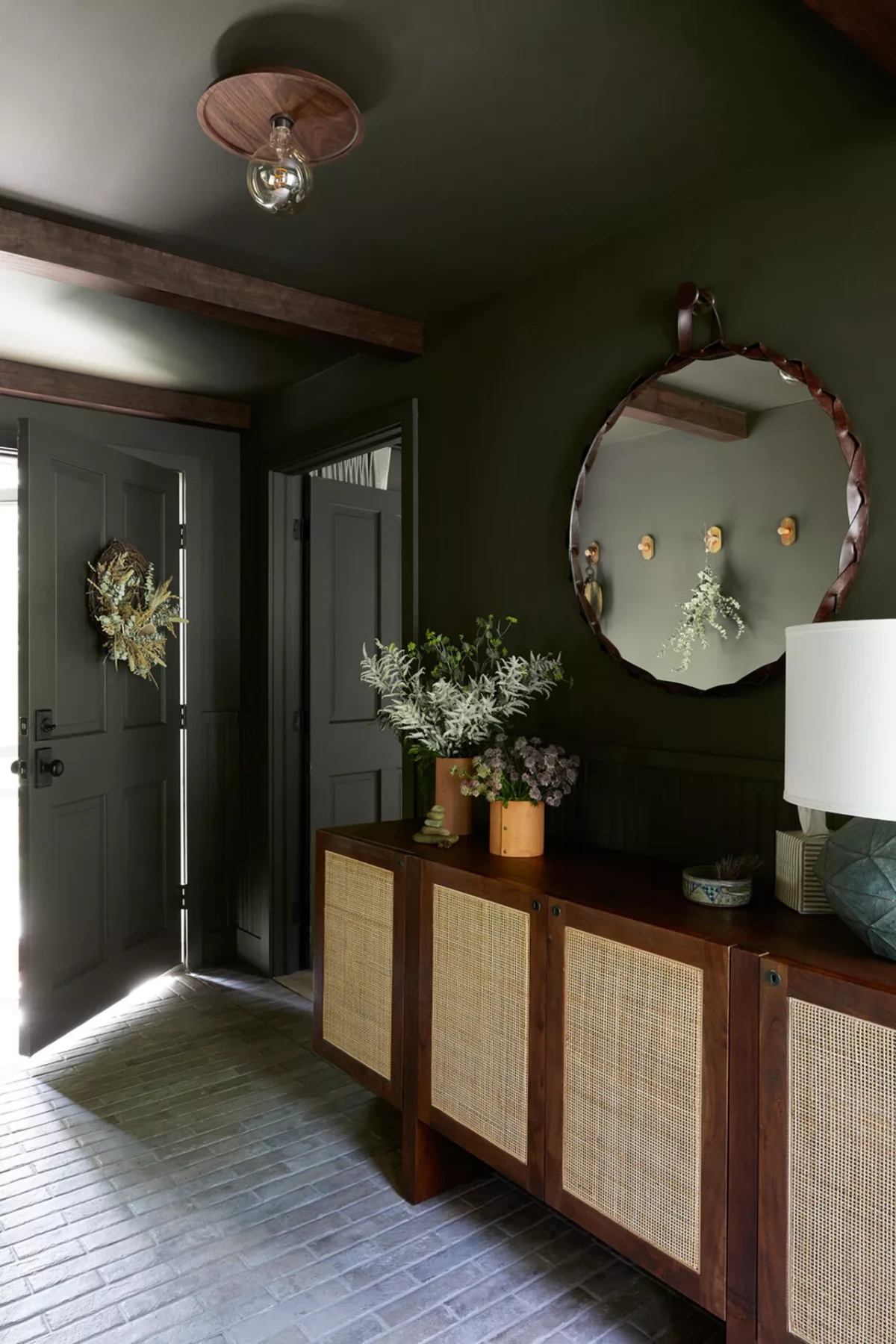
- Matte/Flat: This finish has virtually no shine, which is great for hiding bumps and imperfections on older walls. The downside? It scuffs if you just look at it wrong. I almost never recommend it for entryway walls.
- Eggshell: A solid choice with a very subtle sheen. It’s more durable and washable than matte, making it a decent option for a lower-traffic entryway.
- Satin: This is my go-to for most entryways. It has a soft, velvety glow that reflects some light without being distractingly shiny. Best of all, it’s durable enough to handle being wiped down from fingerprints, scuffs from bags, and whatever else life throws at it.
- Semi-Gloss: With its noticeable shine, semi-gloss bounces a ton of light around. It’s incredibly durable and a breeze to clean. I almost always use this for trim, baseboards, and doors, where durability is king. Using it on walls, however, can be risky as the shine will highlight every single flaw.

Let’s Talk About That LRV Number
When I’m aiming to make an entryway feel bigger, I look for paints with an LRV of 60 or higher. You can usually find this number on the paint manufacturer’s website. For a really dark, windowless entryway, I’ll push that to 75 or more. Some classic choices are great because they provide a clean, bright canvas without feeling cold or sterile—a common fear with whites. One is a crisp, clean white with an LRV over 90, and another popular one is a slightly softer white with an LRV around 84. Both are fantastic starting points.
A lesser-known trick: Consider color drenching. This is where you paint the walls, trim, baseboards, and even the interior side of the door all in the same color. You can use different sheens (like satin on walls and semi-gloss on trim) to add subtle dimension. By blurring the lines where surfaces begin and end, you trick the brain into seeing one continuous, larger space. It’s a bold look that works wonders in small areas.
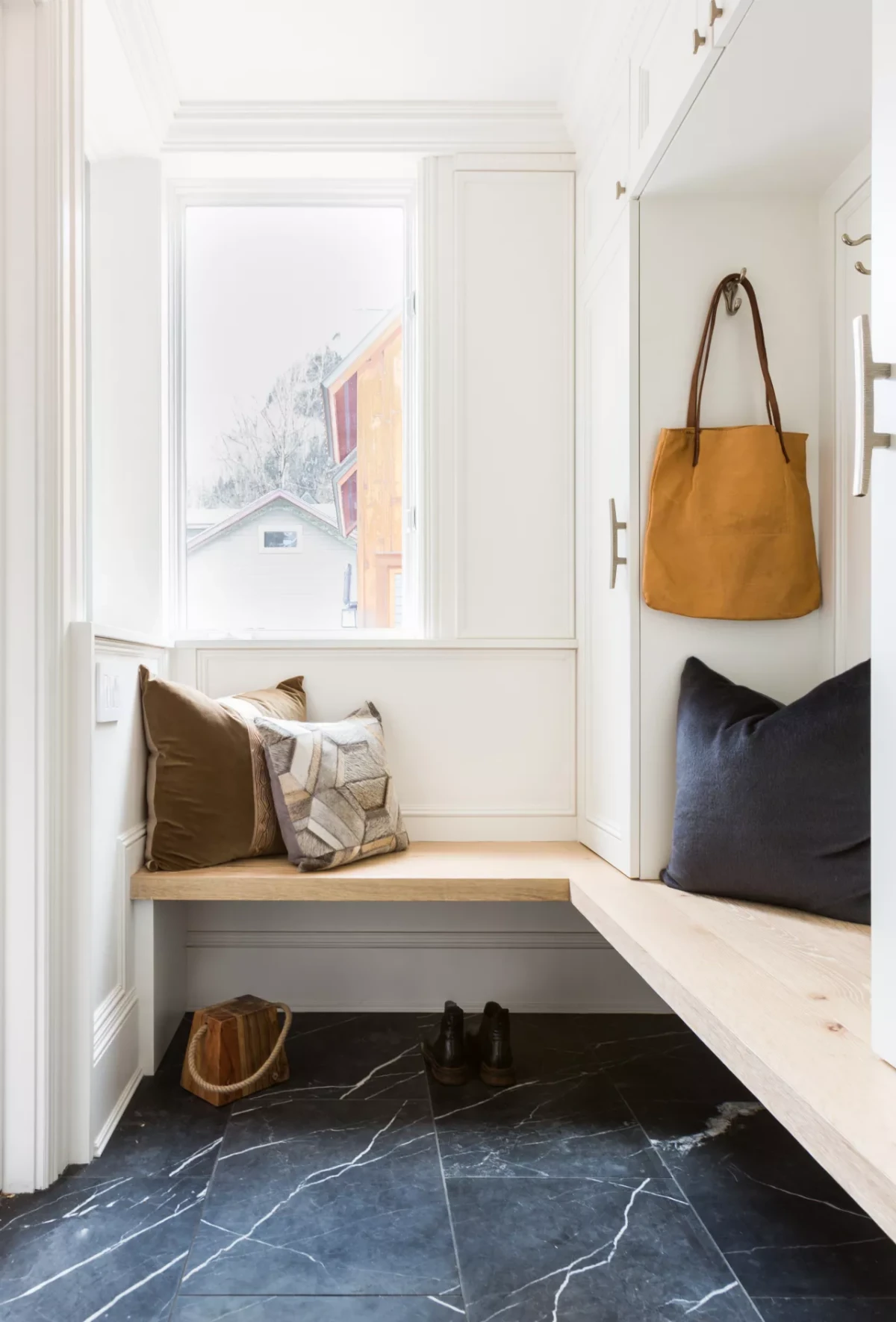
Mastering Light: Your Best Friend in a Small Space
You simply can’t have a bright-feeling space without good lighting. That single, dim overhead light fixture? It’s the #1 enemy of a welcoming entryway. The pros think about lighting in layers to create a space that’s both functional and feels expansive.
For your main (or ambient) light, go for a flush-mount or semi-flush-mount fixture that stays close to the ceiling. A common mistake is going too small! For a standard narrow hallway, say 3 to 4 feet wide, don’t pick a fixture that’s less than 15 inches wide. You need it to have enough presence to actually light the space.
Then, add task lighting. This could be a small lamp on a console table for sorting mail or a wall sconce next to a mirror for that last-minute check. Wall sconces are my favorite trick here because they add beautiful, layered light without eating up any floor or surface space. As a general rule, hang them so the center of the light is about 60 to 66 inches from the floor.
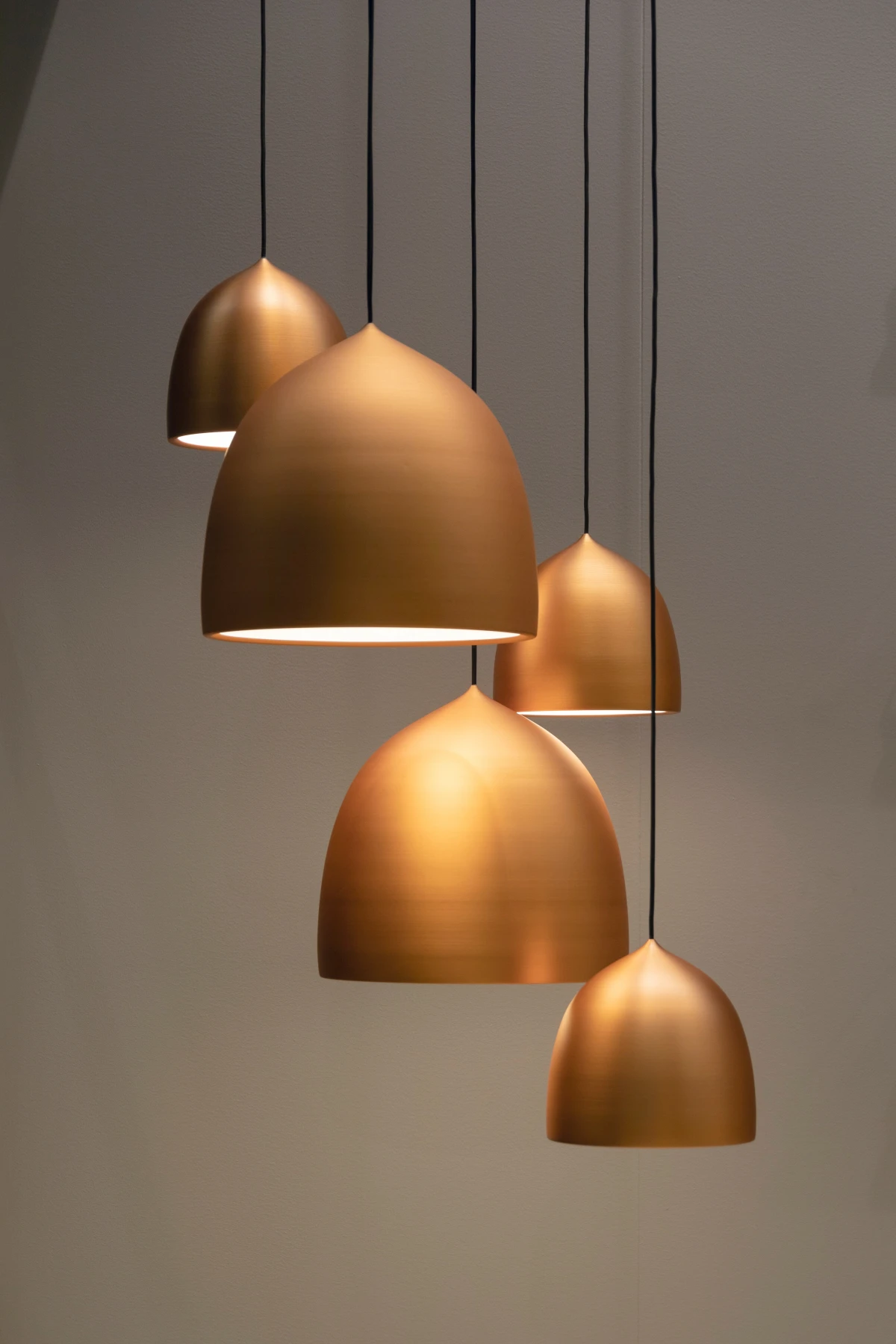
Heads up on the bulbs: When you’re at Home Depot or Lowes, look at the box for two numbers. For a warm, inviting glow, choose a bulb in the 2700K to 3000K range. And always, always buy bulbs with a CRI of 90 or higher. It ensures the colors in your home look true and vibrant.
Help! I’m a Renter!
Can’t go around rewiring things? No problem. You have great options. Look for stylish plug-in wall sconces—they give you the same layered look without needing an electrician. Another brilliant solution is using battery-operated, remote-controlled puck lights. You can stick one under a floating shelf or inside a dark corner for an instant bright spot. They cost about $20-$30 for a pack of three and are a total game-changer.
The Magic of Mirrors (When Placed Correctly)
Everyone knows mirrors make a space feel bigger, but their magic depends entirely on where you put them. Here’s the number one rule: a mirror is only as good as what it reflects.
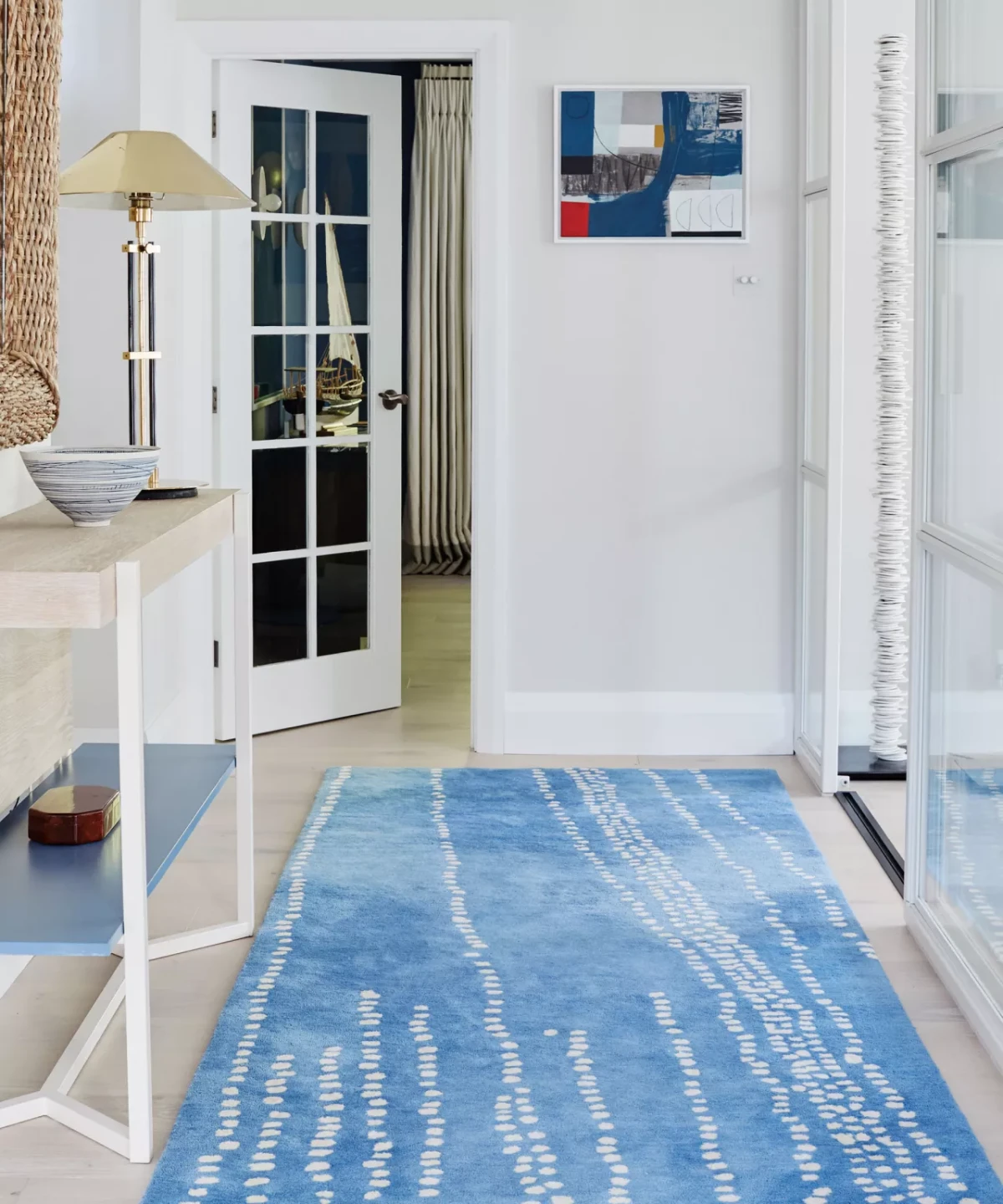
Before you hang one, stand where it will go and look at the opposite wall. If it reflects a cluttered corner or just a blank wall, it’s not helping. The best spot is across from a window or a beautiful light fixture to double the light. Reflecting a doorway into another room is another powerful way to create an illusion of depth.
And don’t be afraid to go big! A large, simple mirror often has a much bigger impact than a small, ornate one. A good rule of thumb is to choose a mirror that’s about two-thirds the width of the console table it hangs above. I once worked on a narrow city entryway where a console table was impossible. We installed a floor-to-ceiling panel of mirror on one long wall. It was a significant investment, likely in the $800-$1500 range depending on size and labor, but it visually doubled the width of the hallway and was completely transformative.
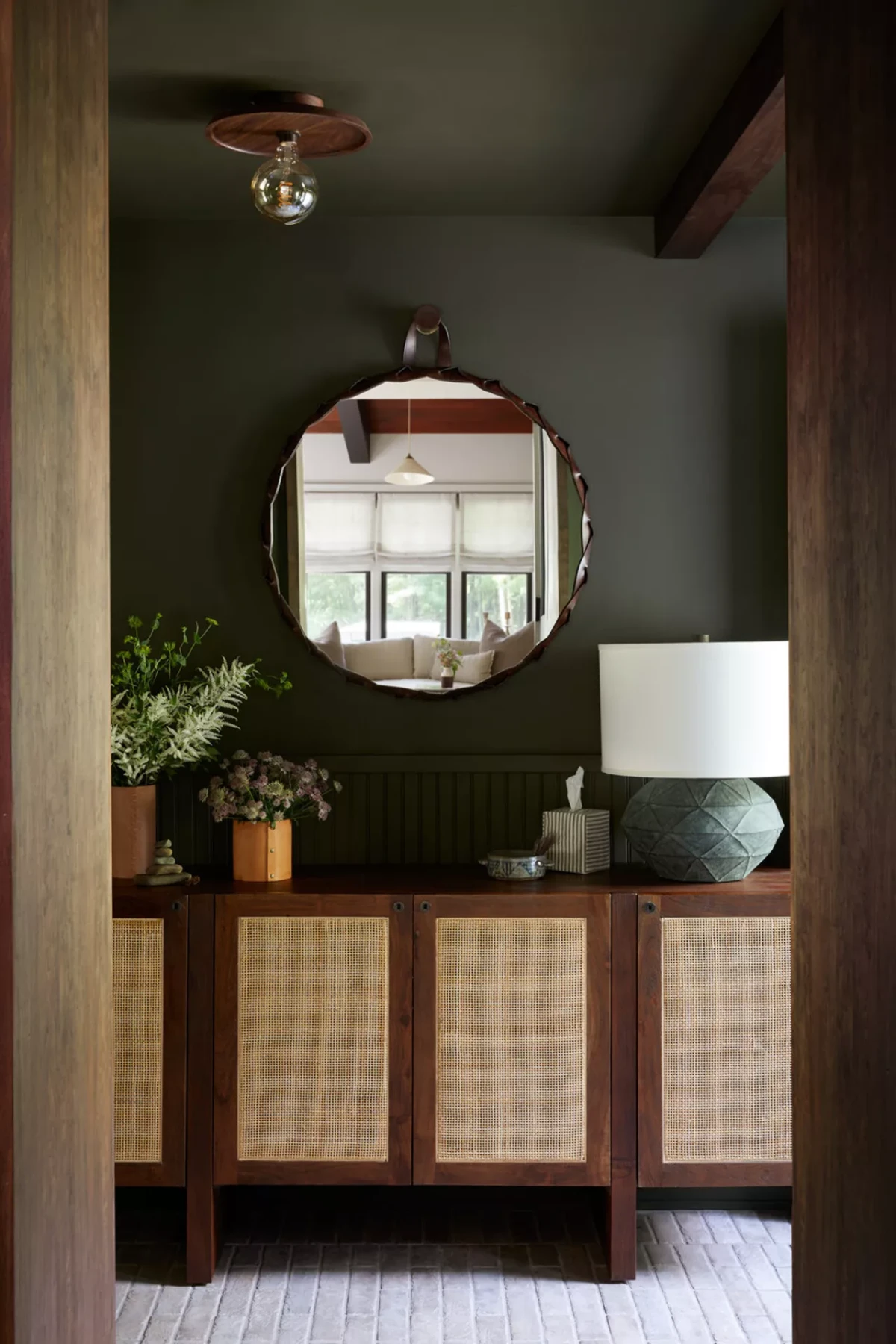
Getting Clutter Under Control for Good
Clutter is the fastest way to shrink a room. An entryway has a tough job—it has to handle coats, shoes, bags, keys, mail… it’s a recipe for disaster without a smart system.
Your 5-Minute Sanity Saver: Don’t have time for a full overhaul? Grab a decorative basket or a tote bag. Put every single piece of clutter from your entryway—the mail, the keys, the sunglasses, all of it—into the basket. Now, step back and look at the space. That feeling of calm is what we’re aiming for. It’s a temporary fix that shows you the power of a clear surface.
When you’re ready for a permanent solution, it’s time for an audit. Your mission, should you choose to accept it: Empty your entryway. All of it. Now, only put back what you absolutely need to grab on your way out the door tomorrow. Be ruthless! The rest needs to find a new home.
The best storage solutions use vertical space. Think tall, narrow cabinets or wall-mounted hooks instead of a bulky coat tree. I’m a huge fan of floating furniture, like a wall-mounted console or bench. When you can see the flooring underneath, it tricks your eye into seeing a larger room. For super narrow hallways (under 40 inches wide), a series of deep picture ledges are amazing. They’re only about 4 inches deep but provide the perfect landing strip for mail and keys without getting in the way.
Don’t Forget the Floor
Whenever possible, it’s best to have continuous flooring that flows from the entryway into the main living area. It creates a seamless, expansive feel. If that’s not possible, try to match the color and tone of your entryway flooring to the adjacent room to minimize the visual chop.
A rug is a great way to define the space, but the most common mistake is getting one that’s too small. A runner is almost always the right answer for a hallway-style entry. It should be long enough to guide you into the home but leave about 6 inches of bare floor on all sides. For material, think durable. If you live somewhere with snow or lots of rain, an indoor/outdoor rug made from polypropylene is a lifesaver. They are tough, easy to clean, and you can find great-looking ones for $40-$100 online or at stores like Target or HomeGoods.
A Quick Word on Safety
Okay, a serious but important note. If you’re installing new light fixtures where there weren’t any before, please hire a licensed electrician. Faulty wiring is no joke. Even swapping an old fixture for a new one requires turning the power off at the circuit breaker first. Hiring an electrician to swap a fixture might cost you $150-$300, but it’s a lot cheaper than fixing a fire hazard.
And when you hang that big, beautiful mirror or a floating cabinet, make sure it’s secure. Always locate a wall stud to anchor heavy items. If a stud isn’t in the right spot, use high-quality toggle bolts rated for well beyond the weight of your item.
Your entryway is more than just a path; it’s the beginning of your home’s story. And by using these pro-level principles of light, color, and function, you can turn even the tiniest corridor into a space that feels open, organized, and genuinely happy to welcome you home.
Inspirational Gallery with Photos
Can a bold, dark color actually work in a tiny entryway?
Absolutely, if you commit to it. This technique, called ‘color drenching,’ involves painting the walls, trim, and even the ceiling in the same saturated hue. Instead of creating harsh lines that highlight the small dimensions, you create a seamless, jewel-box effect that feels intentional and luxurious. It’s a bold move that blurs the room’s edges, making the space feel expansive and immersive. Imagine a deep teal like Benjamin Moore’s ‘Salamander’ or a rich charcoal. The key is excellent lighting to prevent it from feeling like a cave.
- Draws the eye inward, creating a sense of depth.
- Defines the entryway as a distinct ‘room.’
- Grounds the space, preventing floating furniture.
The secret? The right area rug. Ensure it’s large enough that your front door can open over it without catching, but small enough that there’s a border of flooring visible on all sides. A runner is perfect for a long, narrow hall.
A person’s judgment about a home is formed in the first 7 seconds of entering.
This isn’t just about tidiness. It’s about the immediate sensory experience. A well-placed lamp casting a warm glow, a mirror reflecting light, and a clear path forward all contribute to a positive split-second impression, setting a welcoming tone for the entire visit.
Wall-Mounted Console: Floats above the ground, creating an unbroken sightline on the floor which tricks the eye into seeing a larger area. Perfect for storing a few essential items in a sleek way. Check out the minimalist designs from brands like Article or CB2.
Slim-Legged Console: Keeps the feeling light and airy. The open space underneath allows light to pass through and offers a spot to tuck away a pair of beautiful baskets or shoes. The West Elm ‘Streamline’ console is a classic for a reason.
Both are excellent choices, but wall-mounted options are the ultimate space-saver in extremely narrow corridors.
The final touch that designers never forget is scent. A subtle, clean fragrance makes a space feel cared for and intentional. Avoid heavy plug-ins. Instead, opt for a high-quality reed diffuser with a light, natural scent like lemongrass or white tea. A stylish option like a P.F. Candle Co. diffuser can double as a decorative object on your console.
The single most common mistake: A rug that’s too small. It looks like a forgotten doormat and visually shrinks the floor. Your rug should be generous enough to anchor the space, not just wipe your feet on.
When floor space is at a premium, look up. Using vertical space is the key to adding function without clutter. It’s not just about tall, skinny shelves; think more creatively:
- A row of elegant wall hooks, like the ‘Dots’ by Muuto, for coats and bags.
- A floating shelf placed higher than eye level for decorative objects.
- A picture ledge installed to display a rotating collection of art without taking up an inch of floor.
A mirror is the ‘aspirin’ of interior design; it’s the quick fix for so many spatial ailments. – Designer, Charlotte Moss
For truly tight spots, think beyond traditional furniture. The IKEA ‘TRONES’ shoe cabinets are a cult favorite for a reason. They are incredibly shallow (only 18cm deep), can be mounted on the wall at any height, and provide hidden storage for shoes, mail, or winter accessories. Paint them the same color as your wall to make them visually disappear.
Inspiration can come from centuries of tradition. The Japanese genkan is a perfect example. It’s a dedicated entryway where shoes are removed before stepping up into the main living area. This simple act creates a powerful psychological transition from the public, outside world to the private, inner sanctuary of the home. It’s a reminder that an entryway isn’t just a hallway, but a threshold.










